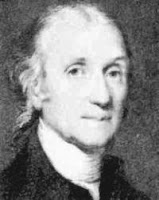Before the correct estimation, the Earth has been weighed by several scientists around the world.
However, its estimated weight was first calculated using an experiment conducted from 1797 to 1978 by an Englishman named Henry Cavendish. The scientist estimated that our planet weighs about five and a half times as much as an equal bulk of water, with its weight being 12,500,000,000,000,000,000,000,000 pounds (5.66990463 x 10^24). His estimate is compared very closely with the calculations of later experimenters, and it was found out that his discovery was correct.
Who is Henry Cavendish?
Born on October 10, 1731, in the Kingdom of Sardinia, a state in Europe from the 14th to the 19th century, Henry Cavendish was born into an aristocratic family who is able to send him to a private school at the age of 11. After graduating from Newcome’s School, he went on to study at the University of Cambridge at the age of 18. However, he left the university on February 23, 1751, without receiving a diploma, although it was a common practice for students to not take a degree during that time.
As his family was into politics, his father has urged him to meet with other aristocrats and politicians during meetings with the other members of the Royal Society of London. But Henry Cavendish slowly lost interest in politics and would rather focus on another venture that his father is also fond of: science.
His constant research and study of different fields of science led him to become one of the committee members that review meteorological instruments in the Royal Society’s Royal Greenwich Observatory. During his tenure at the observatory, he was able to curate or reviews papers that were published in the “Philosophical Transactions of the Royal Society.” In addition, Cavendish was also involved in the committee that researched the transit of Venus across the Sun in 1769, the gravitational attraction of mountains to the Earth in 1774, and the search for the North Pole in 1773.
Before he calculated the density of the Earth, he was notable for discovering hydrogen, an element that he deemed as “inflammable air.” This discovery published in 1766 in a paper title on Factitious Airs. But he was not exactly the one who called the “inflammable air” as hydrogen, as the term was coined after chemist Antoine Lavoisier reproduced the experiment of Cavendish.
When it comes to Cavendish’s personality, he was described by many to be a shy man who avoided large crowds. His shyness must have led to him being disinterested in politics, as you need to have good social skills so that you can connect to your people more. The only time where he socialized was in meeting for the Royal Society Club, although during debates, he would just nod or mumble as a reply. The introverted Cavendish is also said to be shy around women, and her servants in the laboratory were only receiving notes to do tasks instead of being spoken to by Cavendish himself. In modern studies, researchers speculate that Cavendish may have Asperger syndrome, a disorder wherein the affected person is having trouble communicating with others.
Cavendish would usually perform experiments or tests at his home. Inside the many houses that he owned in his life, the laboratories often dominated the available spaces. Most of his papers also remained unpublished during his career as a scientist, as he didn’t want to discuss his findings with other scientists since he was too shy to debate with them. However, despite his secretive personality, Cavendish was respected by colleagues and fellow scientists to be a prolific genius who has created great experiments and inventions for the benefit of humankind. His neighbors were also very fond of him, with some even telling their children that they should be proud of Cavendish because he was the one who weighed the world.
Henry Cavendish died on February 24, 1810, and was buried with his ancestors in The Cathedral Church of All Saints Derby in England. After his death, the Cavendish Laboratory at the University of Cambridge was named after him in honor of his contributions to science. The facility was endowed by William Cavendish, the 7th Duke of Devonshire and a relative of Henry who admired his work.
The Cavendish Experiment
In 1978, Cavendish published a paper detailing his discoveries and calculations about the density of the Earth using the “Cavendish experiment.” The tool that he used for this experiment was a torsion balanced initially invented by John Michell, a geologist who passed away before conducting his tests on the machine. Cavendish wanted to finish Michell’s experiment, so he asked for the apparatus to be sent to his home in London. The device was sent in crates, and Cavendish participated in the rebuilding of the torsion balance in 1797.
In terms of the apparatus’s parts, it consists of two lead spheres that are 2 inches in length and 1.61 pounds in weight. These lead spheres are attached to the arms of the torsion balance, which also has two large lead balls that are weighing at 350 pounds. The experiment is supposed to measure the force of gravitational attraction between the lead balls and the lead spheres.
Cavendish modified the apparatus after noticing that it is sensitive to changes in the temperature as well as the gusts of wind entering the facility. He placed the apparatus inside a locked room that cannot be affected by temperature or wind, and he modified it to have external controls so that he can maneuver its movements without entering the room.
After the estimation of the Earth’s weight, many scientists argue if whether Cavendish was calculating the Earth’s density or mass. Research suggests that Cavendish may have been wrong in naming his calculations as the density of the Earth, when in fact, it was supposed to indicate the planet’s “G” or mass. The term “G” was only used to refer to Cavendish’s estimation in 1873, which is more than 90 years after Cavendish performed the experiment.
More reading:
- Earth (Wikipedia)
- Henry Cavendish (Wikipedia)

